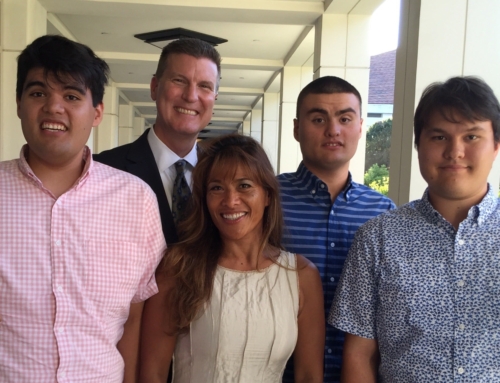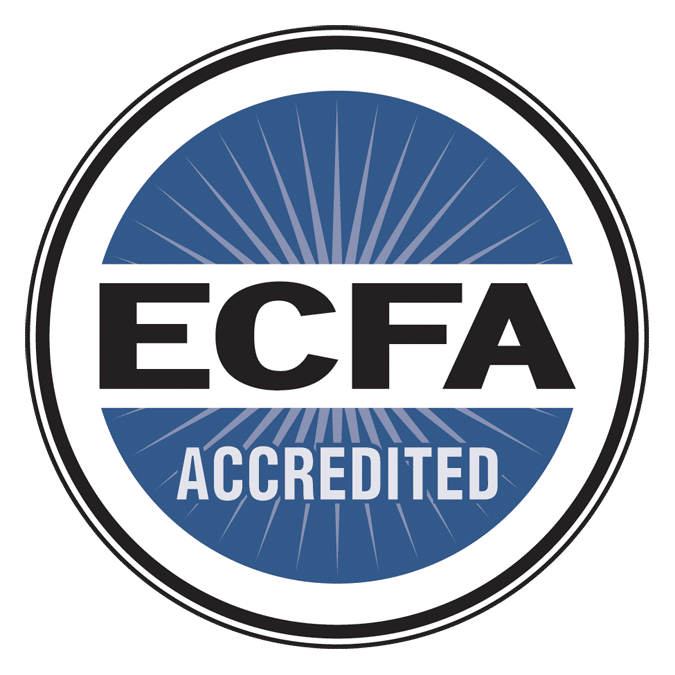The 5 Stages of Changing Church Culture to Embrace Special Needs Families

The main thing stopping people with disabilities from belonging to a church community are not inaccessible facilities, but closed hearts.
For people with disabilities, this is probably not news. What’s strange, however, is that almost no one wants to exclude people with disabilities from the life of the church.
So where does this gap come from?
In a lot of cases, it’s a chicken and egg problem. Churches that haven’t thought about disability often don’t have anyone with a disability in their church. And churches that don’t have anyone with a disability are unlikely to think much about disability!
Without anyone realizing it, the church can let outside forces (like pop culture) shape their view on disability. Many churches feel unequipped to welcome people with disabilities. They might assume that disability is a matter best left to the experts. But if Christ died for people with disabilities, what efforts should we make to include them in the Body of Christ? If Christ is preparing a place for them in heaven, shouldn’t we be preparing a place for them in our churches?
We need to prove, in word and deed, that people with disabilities are loved by God and have a place in the Body of Christ. When Christ told us to “go into all the world and preach the Gospel,” he wasn’t excluding those with disabilities.
Welcoming people of all abilities means assessing the culture of our churches.
The 5 Stages of Culture Change are a guide your church can follow to become more welcoming towards people with disabilities. Finding which stage describes your church helps you find a path forward.
1. Unawareness
No one is going to solve an issue if they don’t know it exists. Understanding the gaps in our awareness about disability opens the door to change. You can build awareness by listening to the experiences of those impacted by disability. Read God’s Word with a fresh awareness of how God related to those who were disabled.
Churches in the stage of Unawareness often have very few people with disabilities visible in their church. If people with disabilities are present, they may be separated from the main church body. As churches become aware of God’s heart for people with disabilities, they will almost always ask how their church can remove barriers and help people with disabilities truly belong.
2. Evaluation
If realizing your church might have barriers is the first step, finding those barriers is the second. Action is the embodiment of beliefs and values; they’re words given form.
“Faith by itself isn’t enough. Unless it produces good deeds, it is dead and useless.”
James 2:17
In other words, it doesn’t matter what we believe if that belief doesn’t motivate us to action.
These actions should help remove barriers in our churches! Barriers might exist in the environment (such as stairs), or in the hearts of people (such as the fear of saying or doing the wrong thing). Identifying barriers clarifies our next steps.
By finding barriers and receiving practical training, churches can move on to the third stage of culture change.
3. Care
After we become aware of the problem, evaluate barriers, and receive training, it’s time to implement systems of care. This will look different at every church. What your church does should be a direct response to the needs of your community. Care might look like providing one-on-one buddies, transportation, or a quiet room. These systems help bring “the church” and people with disabilities closer together.
Distance can remain if people with disabilities are viewed as the object of service. If “we” serve “them,” there’s still a gap. But if friendships form between people with and without disability, this gap continues to shrink.
4. Friendship
Friendships close the gap on a personal level. In friendship, we discover each other’s hopes, dreams, hurts, gifts, and abilities. Because the gifts God gives us are for community, they can only be discovered in community. No one will find their gift if they live in isolation.
The final step comes when a church provides people with disabilities the chance to use their gifts in ministry.
5. Contribution
When people with disabilities become valued, contributing members of the church, the gap has been fully closed. When people with disabilities serve, they are no longer strangers to the congregation, but friends. They are not merely people who are served, but people who serve through their presence, gifts, and abilities.
Guests are welcomed into a home and given a seat at the table, but family helps set the table, serve the food, and do the dishes.
Churches where people with disabilities are not merely guests but family are churches that reflect the reality that “there is one Lord, one faith, one baptism, one God and Father of all, who is over all, in all, and living through all.” They are proving that every follower of Christ has been given “a special gift through the generosity of Christ” for contributing to the body of Christ (Ephesians 4:5-7, NLT).
When our churches exclude people with disabilities, they’re not just narrowing the scope of the Great Commission; they’re missing out on the gifts that people with disabilities bring.
1 Corinthians 12 tells us “Our bodies have many parts, and God has put each part just where he wants it… there are many parts, but only one body. The eye can never say to the hand, ‘I don’t need you.’ The head can’t say to the feet, ‘I don’t need you.’ In fact, some parts of the body that seem weakest and least important … are actually the most necessary.”
We must remember the Gospel is not about what we can do … but what Jesus has done.
God “purchased our freedom with the blood of his Son and forgave our sins.” That sacrifice was for people of all abilities, even those with profound disabilities.
Download and share the 5 Stages of Culture Change below!

Connect With Our Team!
Do you have questions about what disability ministry at your church looks like? We would love to hear from you!
Email us at [email protected] or by calling 818.707.5664.





